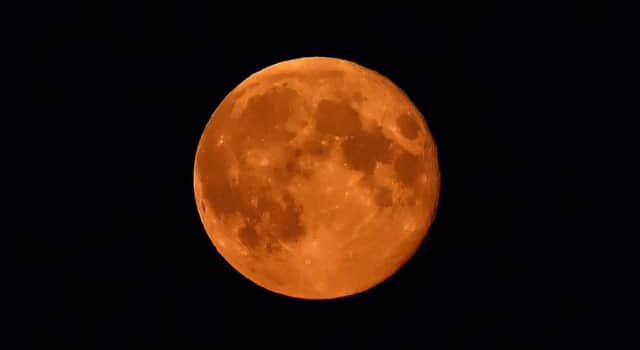Red supermoon eclipse set to shine over UK


In the early hours of Monday morning, believers and non-believers alike will gaze to the skies to witness a spectacular blood red “supermoon”. Depending on your faith, it will be an occasion for wonder or fear.
The moon turning a deep rusty red represents the first time in 30 years that a lunar eclipse has taken place with the moon at its closest point to the earth.
Advertisement
Hide AdAdvertisement
Hide AdDue to sunlight being scattered by the earth’s atmosphere, the milky white planet will appear to change colour.
Astronomers across the world have already set their alarm in anticipation for the event, though others are considerably more nervous.
Down through the ages, so-called “blood moons” have been viewed as ill-omens by superstitious people.
Monday’s eclipse is said to be even more significant, since it marks the completion of an unusual line-up of four total eclipses at six monthly intervals, known as a “tetrad”.
Texan pastor John Hagee points out that this has happened only three times in the past 500 years and claims it is likely to herald a “hugely significant” world event.
As the author of a best-selling book on the phenomenon, Four Blood Moons, Mr Hagee points out that the last three incidents were each associated with a globally significant religious event.
In 1493, a tetrad took place at the same time as the expulsion of Jews by the Catholic Spanish Inquisition. The second coincided with the establishment of the state of Israel in 1949, and the third occurred in 1967, precisely at the time of the six-day Arab-Israeli war.
Others also point to an ominous sentence in the Book of Joel, which they say is especially prescient in a year when there has already been a total solar eclipse. It states: “The sun shall be turned into darkness, and the moon into blood, before the great and the terrible day of the Lord comes.”
Advertisement
Hide AdAdvertisement
Hide AdWhen the moon is at “perigee”, its shortest distance from the earth, it is 226,000 miles away and appears 14 per cent larger and 30 per cent brighter than when it is at its furthermost point.
Seen from the UK, the eclipse is due to begin at 1:10am with the “total” phase – when the moon is completely in shadow – lasting from 3:11am to 4:24am. It will end when the moon leaves the earth’s shadow at 6:24am.
Whether the world is about to end or not, the phenomenon is well worth staying up for, according to leading amateur astronomer Robin Scagell.
Mr Scagell, vice-president of the Society for Popular Astronomy, said: “From a UK point of view, it’s happening at a most unsuitable time, but I would say it’s definitely worth setting the alarm for to look out and see this red moon hanging over the treetops.
“It’s quite an unusual sight, and the weather forecast is good. It’ll be even prettier seen through a pair of binoculars. You will see the colour when the moon is fully in shadow.
“It will probably be a deep red – how dark depends on the atmospheric conditions at the time.”
Mr Scagell said it was possible the edge of the moon might have a bluish tinge and reassured people that unlike a solar eclipse, a lunar eclipse is completely safe to observe through binoculars or a small telescope.
As for the doomsday prophecies, Mr Scagell quoted the late TV astronomer Sir Patrick Moore, who said: “Astrology proves one thing only, that there’s one born every minute.”
Advertisement
Hide AdAdvertisement
Hide Ad“The end of the world is not going to happen,” Mr Scagell insisted.
It will be the last total lunar eclipse visible from the UK until 2019.
The previous three total lunar eclipses in the tetrad occurred on April 15 2014, October 8 2014, and April 4 2015, but were not visible from the UK.